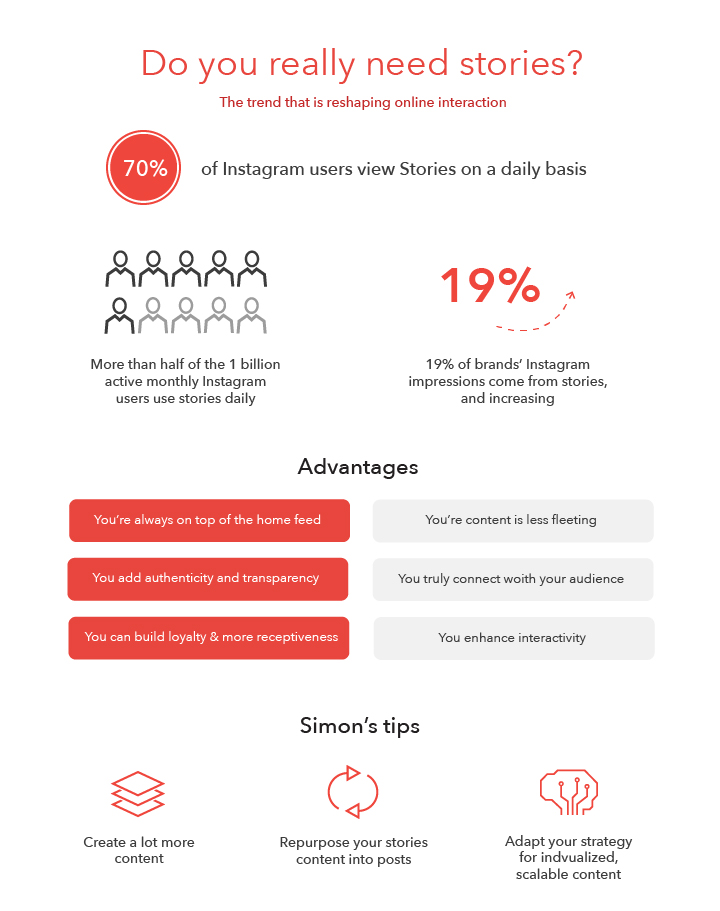Why all the fuss about stories?
Everything you wanted to know about using stories for social media content marketing, but were afraid to ask
Stories. Most social media platforms have them. Mobile, full-screen, vertical videos and images that appear outside of your regular feed and disappear after 24 hours. It began with Snapchat, followed by Instagram, Facebook and LinkedIn.
Now, it’s Twitter’s turn. The new kid on the block is called ‘fleets’. The disappearing tweets can only be viewed by tapping on a user’s profile picture. Although seemingly similar to the usual stories format, fleets have a few differences, making the experience more focused on gaining an insight into the user's thoughts.
With the arrival of stories on business-oriented social media such as LinkedIn and Twitter, their influence in thought leadership and professional content marketing is growing by the minute.
Let’s take a look at some numbers:
So, with almost every social media platform hopping on the Stories bandwagon, what are the benefits and drawbacks of implementing a feature like this and how can your business profit from it?



